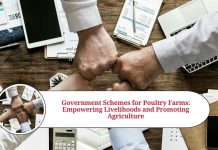Introduction
In recent years, governments around the world have recognized the immense potential of empowering individuals through skill development and entrepreneurship. One such initiative gaining momentum is the Sewing Machine Government Scheme. This innovative program aims to provide sewing machines to aspiring entrepreneurs, artisans, and homemakers, opening up a world of creative possibilities and economic opportunities. In this blog post, we will explore the benefits of this scheme and how it has transformed lives and communities.
Unleashing Entrepreneurship:
The Sewing Machine Government Scheme has become a powerful catalyst for entrepreneurship, especially among women in many countries. By providing sewing machines, the scheme enables individuals to start their own small-scale businesses, either from the comfort of their homes or by setting up dedicated workshops. This initiative has paved the way for self-employment, fostering financial independence and reducing dependence on traditional employment avenues.
Economic Empowerment:
By equipping individuals with sewing machines, governments are actively promoting economic empowerment. Skilled artisans can utilize the machines to produce a wide range of products, such as clothing, accessories, home textiles, and more. These products can be sold locally or even globally through various online platforms, contributing to income generation and economic growth.
Skill Development:
The Sewing Machine Government Scheme not only provides the means for entrepreneurship but also promotes skill development. Participants receive training on operating sewing machines, mastering various stitching techniques, and understanding the basics of garment construction. This training equips individuals with the necessary skills to create high-quality products, ensuring their businesses thrive in a competitive market.
Women’s Empowerment:
Women, in particular, have greatly benefited from the Sewing Machine Government Scheme. In many societies, women face limited opportunities for economic advancement due to various social and cultural factors. By providing sewing machines, the scheme empowers women to break free from these constraints and become financially independent. It allows them to balance their household responsibilities while pursuing their entrepreneurial dreams, thereby promoting gender equality.
Community Development:
The scheme has a broader impact on community development. As more individuals establish their sewing businesses, they often employ local artisans, creating employment opportunities within their communities. This leads to the growth of a small-scale industry, resulting in improved livelihoods, reduced poverty, and enhanced social cohesion. Additionally, the products created by these entrepreneurs often reflect the cultural heritage of the region, thereby preserving traditional crafts.
Conclusion
The Sewing Machine Government Scheme stands as a shining example of how governments can empower individuals and communities through skill development and entrepreneurship. By providing sewing machines, this scheme has opened doors to countless opportunities, allowing aspiring artisans and entrepreneurs to transform their lives. It has unleashed creativity, fostered economic independence, and promoted women’s empowerment, all while contributing to community development. As we move forward, it is crucial for governments and stakeholders to continue supporting such schemes and ensure they reach the marginalized sections of society, unlocking the full potential of individuals and societies alike.
Read more useful content:
Frequently Asked Questions (FAQs)
Q: What is the Sewing Machine Government Scheme?
A: The Sewing Machine Government Scheme is an initiative implemented by governments to provide sewing machines to individuals, especially aspiring entrepreneurs, artisans, and homemakers. The scheme aims to promote skill development, entrepreneurship, economic empowerment, and women’s empowerment.
Q: Who is eligible to benefit from the Sewing Machine Government Scheme?
A: Eligibility criteria may vary depending on the specific scheme and the country implementing it. Generally, individuals who demonstrate a genuine interest in starting a sewing-related business or enhancing their sewing skills are eligible. Priority may be given to marginalized communities, women, and individuals with low income.
Q: How can one apply for the Sewing Machine Government Scheme?
A: The application process for the Sewing Machine Government Scheme is usually outlined by the respective government department or agency responsible for implementing the scheme. It typically involves filling out an application form, providing necessary documentation, and sometimes undergoing an evaluation or interview process.
Q: What types of sewing machines are provided under the scheme?
A: The types of sewing machines provided can vary depending on the scheme and budget allocation. However, the machines generally offered are suitable for domestic or small-scale commercial use. They may include basic sewing machines, advanced machines with multiple stitching options, or specialized machines for specific tasks like embroidery or quilting.
Q: Is training provided along with the sewing machine?
A: Yes, many Sewing Machine Government Schemes include training as an integral part of the initiative. Participants are often provided with training sessions on machine operation, stitching techniques, garment construction, and other relevant skills. This ensures that beneficiaries are equipped with the necessary knowledge to make the most of their sewing machines.
Q: Can beneficiaries sell the products they create using the sewing machine?
A: Absolutely! One of the main objectives of the Sewing Machine Government Scheme is to promote entrepreneurship and income generation. Beneficiaries are encouraged to sell the products they create using the sewing machines. They can establish their own businesses, participate in local markets, sell online, or collaborate with retailers or designers to reach a wider customer base.
Q: Are there any ongoing support systems for beneficiaries of the scheme?
A: The level of ongoing support provided to beneficiaries can vary depending on the specific scheme and its implementation. Some schemes may offer mentorship programs, access to business development resources, or financial assistance for expanding their sewing businesses. It is important to check with the relevant government department or agency to understand the available support systems.
Q: Can individuals outside of the targeted demographic benefit from the Sewing Machine Government Scheme?
A: The Sewing Machine Government Scheme primarily aims to empower marginalized individuals, women, and those with limited resources. However, some schemes may have provisions for wider participation, depending on the government’s objectives. It is advisable to check the specific eligibility criteria outlined by the scheme to determine if individuals outside the target demographic can participate.
Q: How can the Sewing Machine Government Scheme contribute to community development?
A: The Sewing Machine Government Scheme has the potential to contribute to community development in several ways. By promoting entrepreneurship, it creates employment opportunities within the community. The growth of small-scale sewing businesses leads to improved livelihoods, reduced poverty, and enhanced social cohesion. Additionally, the preservation of traditional crafts through the production of culturally significant products also contributes to community identity and heritage conservation.




















